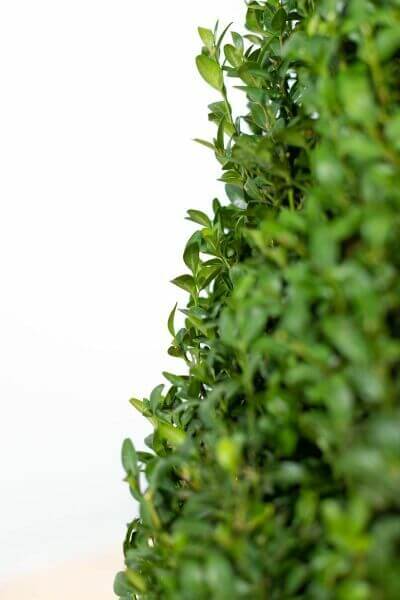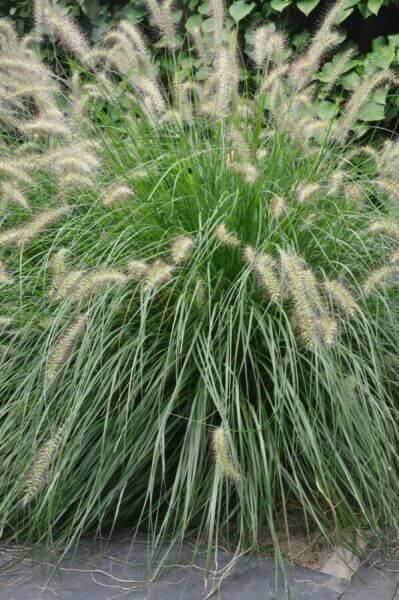Best Hedge Plants For Wet Conditions
Enhance your garden's attraction with lush hedge ranges such as Yew (Taxus), Thuja, Laurel, Photinia, and Bamboo, commemorated for their structural stability and environmental benefits.
Yew and Thuja provide evergreen coverage and winter strength, while Laurel provides fast growth and broad, aromatic leaves.
Photinia adds seasonal charm with its lively red foliage, and Bamboo provides a low-maintenance, peaceful atmosphere.
These hedges improve air quality, reduce sound, and produce tranquil, personal areas.
Correct planting, spacing, and upkeep guarantee vigorous growth and ecological consistency.
Check out how these rich ranges can elevate your garden's beauty and well-being.
Key Takeaways
Change Your Garden With Lush Hedge Varieties
- Select Yew for its thick, evergreen development and unequaled durability.
- Choose Laurel for its fast development and broad leaves, guaranteeing quick privacy.
- Select Photinia for its vibrant seasonal foliage, which turns a striking dark red.
- Utilize Bamboo for a low-maintenance, winter-hardy hedge with visual appeal.
- Space plants 2-3 per meter and prune frequently for ideal development and health.
Popular Hedge Plants
When changing a garden with rich hedge ranges, it's vital to consider popular hedge plants such as Yew, Thuja, Laurel, and Photinia due to their unique attributes and benefits.
Yew (Taxus) is extremely esteemed for its durability and dense, green growth, making it a prime option for enduring landscapes.
Thuja is noted for its evergreen foliage and robust winter season resilience.
Photinia includes seasonal vibrancy with red leaves that darken over time, developing dynamic visual appeal.
Laurel provides quick growth and aromatic, broad leaves, perfect for quick privacy.
Additionally, Bamboo is an outstanding option for ambiance, providing a low-maintenance, winter-hardy choice that boosts the garden's aesthetic with its sophisticated, swaying walking sticks.
These choices accommodate a range of horticultural needs and preferences.
Advantages of Garden Hedges
Garden hedges use a wide range of benefits, making them a valuable addition to any landscape. These natural barriers are cost-efficient to implement and provide considerable wind defense, enhancing air circulation and contributing to noise decrease. The thick foliage of hedges like Thuja and Beech makes sure privacy by obstructing visibility, producing a tranquil and secluded environment.
Hedges likewise play a crucial role in microclimate policy, offering a steady environment that cultivates plant development and lessens temperature level variations. Their detailed leaf structures filter contaminants, enhancing air quality and adding to a healthier garden community.
Furthermore, hedges master noise decrease, taking in and deflecting acoustic waves to lower ambient sound levels. This dual functionality of offering both visual and acoustic privacy enhances the overall serenity and aesthetic appeal of any garden.
Planting and Maintenance Tips
For a successful hedge, careful preparation of the planting location is important. Guarantee the soil has proper pH and drainage to support strong root advancement.
Space the plants properly for the chosen types. Water the hedge often during its preliminary development phase, changing as required with seasonal changes.
Implement a organized insect control and illness prevention strategy, utilizing chemical or organic treatments when necessary. Frequently examine for aphids, mites, and fungal infections.
Apply mulch to maintain moisture and reduce weeds. Seasonal pruning promotes thick development and air flow, important for plant health.
Following these standards will assist you cultivate a vibrant, well-maintained hedge that improves the beauty of your garden.
Spacing and Cutting Guidelines
Spacing and Cutting Guidelines
Correct spacing and trimming are vital for cultivating healthy, aesthetically appealing hedges. Sufficient spacing ensures each plant receives enough nutrients, light, and air flow.
Follow these guidelines for optimum hedge upkeep:
- Spacing: Position hedge plants 2-3 plants per meter to encourage robust growth.
- Pruning Methods: Regular pruning is essential for maintaining desired hedge height and shape. Trim new growth in summertime and cut back older wood throughout winter season.
- Seasonal Care: Change trimming schedules and techniques according to seasonal requirements to make sure plant health.
- Hedge Height: Routinely monitor and cut to maintain the preferred hedge height and attain uniform looks.
Adhering to these steps will guarantee your hedge thrives, boosting both the appeal and functionality of your garden.
Selecting the Right Hedge
Picking the Right Hedge
Selecting the appropriate hedge involves assessing aspects such as fully grown height, foliage density, and ecological resilience. Successful hedge plant selection needs understanding each species' growth qualities and site-specific versatility.
For instance, Yew (Taxus) uses excellent longevity and dense growth, while Thuja is notable for its winter durability. In addition, thinking about upkeep requirements is vital; fast-growing types like Laurel or Privet need routine cutting, whereas low-maintenance alternatives like Bamboo or Ivy may be more effective for those looking for very little upkeep.
Environmental factors such as soil type, light availability, and moisture conditions should likewise assist the choice procedure. This careful approach ensures the selected hedges will prosper, offering both practical and aesthetic benefits to the garden landscape.
Delivery and Planting Recommendations
To ensure your hedge plants grow, they should be provided by specialized carriers and planted immediately upon arrival.
Follow these vital steps for successful planting:
- Soil Preparation: Enrich the soil with raw material to improve drain and nutrient material.
- Planting Depth: Create a trench two times the width and equivalent to the depth of the root ball.
- Watering Methods: Water thoroughly after planting, keeping the soil regularly damp but not saturated.
- Mulching: Use a layer of mulch to keep wetness and reduce weeds.
Customer Assistance and Service
Provided the crucial function of prompt support in horticultural pursuits, our consumer assistance team is readily available six days a week through telephone, email, and social networks to use professional guidance and promptly deal with any issues. Their commitment to fast response times makes sure client satisfaction by fixing questions connected to plant health, optimal planting approaches, and maintenance schedules.

Communication Technique
----------------------
Six days a week
Within 2 days
This extensive support system, reinforced by a stellar 9.3/ 10 customer rating, highlights our dedication to boosting the gardening experience for every customer.
Often Asked Questions
How Long Does It Consider Hedge Plants to Develop?
Hedge plants typically require one to 3 years to become totally developed, with the precise duration differing by species and growing conditions.
Effective care during this important duration is important for robust development. Consistent watering, alert weed control, and suitable fertilizer application are pivotal in promoting strong root advancement.
For example, fast-growing types like Laurel may develop more rapidly, while slower-growing ranges such as Yew might take longer. Persistent maintenance speeds up the facility process, leading to healthy and thick hedges.
What Are the very best Hedge Plants for Personal Privacy?
The question of the finest hedge plants for personal privacy involves examining evergreen and deciduous choices.
Evergreen hedges like Thuja, Laurel, and Cypress offer year-round protection, ensuring constant privacy.
On the other hand, deciduous hedges such as Beech use seasonal privacy, shedding leaves in chillier months.
Secret upkeep suggestions for personal privacy hedges include routine cutting, fertilizing in spring, and proper spacing-- generally 2 to 3 plants per meter.
In addition, consistent watering and thorough weed removal are vital for promoting healthy, dense growth.
Can Hedge Plants Bring In Wildlife to My Garden?
Yes, hedge plants can bring in wildlife to your garden by providing vital advantages like shelter, food, and nesting websites, thus boosting regional biodiversity. For example, yew, holly, and laurel are outstanding for drawing in birds, while ivy supports a range of insects.
Nevertheless, it's important to note that there are some disadvantages, such as increased upkeep to handle bugs and routine maintenance. Carefully choosing and keeping hedge ranges can assist stabilize these benefits and downsides, eventually cultivating a sustainable and lively ecosystem in your garden.
Are There Any Blooming Hedge Plants Available?
Yes, there are flowering hedge plants readily available that can boost the appeal of your garden.
For instance, Elaeagnus, likewise understood as Olive Willow, produces aromatic white flowers in the fall, including a touch of sophistication.
Photinia, another popular option, showcases dynamic red leaves that mature into an abundant green, developing a vibrant visual result throughout the seasons.
To guarantee these plants prosper, it's vital to practice appropriate pruning methods and seasonal maintenance, such as trimming brand-new development in the summertime and cutting back in the winter.
These measures will help keep the health and visual appeal of your flowering hedges.
How Do I Prevent Bugs in My Hedge Plants?
To avoid bugs in hedge plants, utilize natural pest control methods and keep appropriate hedge care. Introduce beneficial pests like ladybugs, which take advantage of harmful bugs, to produce a balanced environment.
Frequently examine your hedges for signs of problem and promptly get rid of any affected parts to avoid the spread. Guarantee the health of your hedges by applying well balanced fertilizers and providing appropriate water.
Use mulching to retain soil wetness and proper spacing to lower plant stress and promote robust development. These practices jointly assist in reducing bug concerns and maintaining a healthy hedge.
Conclusion
In essence, picking the best check here hedge ranges such as Yew, Thuja, and Laurel can transform any garden into a tranquil sanctuary. These plants supply year-round greenery, boost visual appeal, and deal useful advantages like sound decrease and wind security.
Correct planting strategies, accurate spacing, consistent watering, and seasonal trimming are vital for optimal growth.
Trustworthy shipment services and professional client support ensure a smooth experience from purchase to planting, making it easier than ever to raise your outdoor space.
Garden hedges use a plethora of advantages, making them a valuable addition to any landscape. These natural barriers are cost-effective to implement and provide substantial wind protection, improving air flow and contributing to sound reduction. The dense foliage of hedges like Thuja and Beech guarantees personal privacy by blocking presence, creating a secluded and peaceful environment.

Pruning Strategies: Regular pruning is essential for keeping preferred hedge height and shape. Trim brand-new growth in summer season and cut back older wood throughout winter.